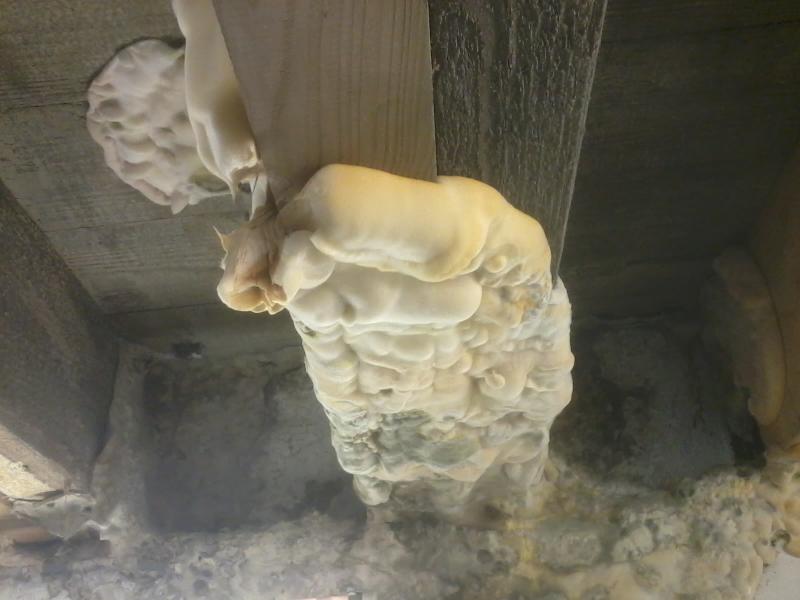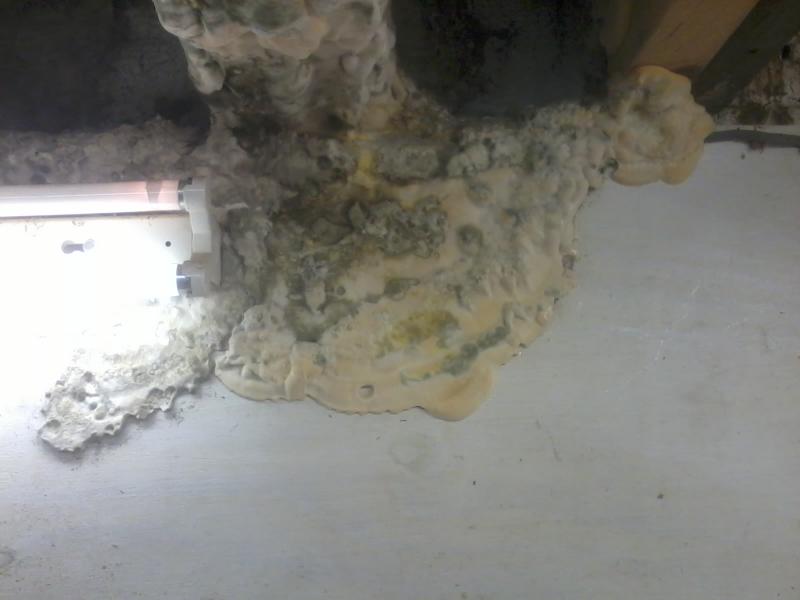Hi folks,
Just registered with the forum after discovering a large fungal growth on the joists in a Victorian brick-built out building. I fear from doing some googling that it may be a dry rot fruiting body. The building is damp (ground level at back of building is probably 10ft higher than internal floor level) We only bought the house with the affected detached out building last year.
Pictures attached below. Any advice/confirmation of the infestation welcomed.
TIA for any help.
Just registered with the forum after discovering a large fungal growth on the joists in a Victorian brick-built out building. I fear from doing some googling that it may be a dry rot fruiting body. The building is damp (ground level at back of building is probably 10ft higher than internal floor level) We only bought the house with the affected detached out building last year.
Pictures attached below. Any advice/confirmation of the infestation welcomed.
TIA for any help.




